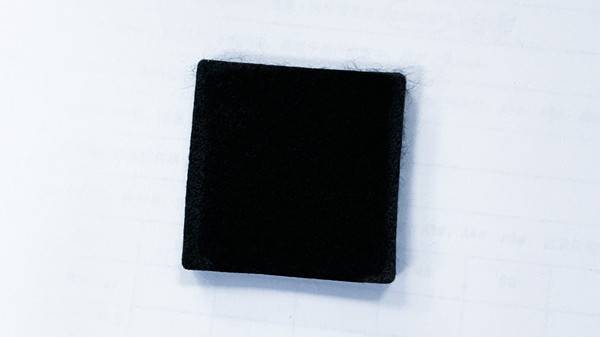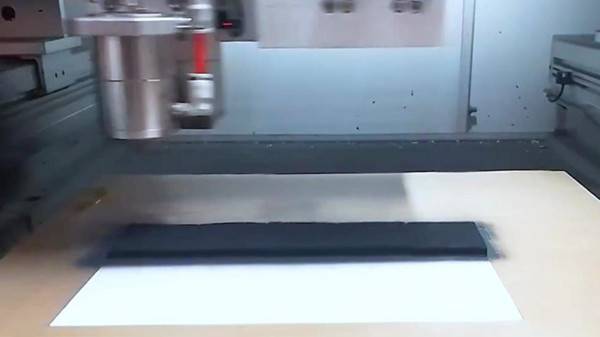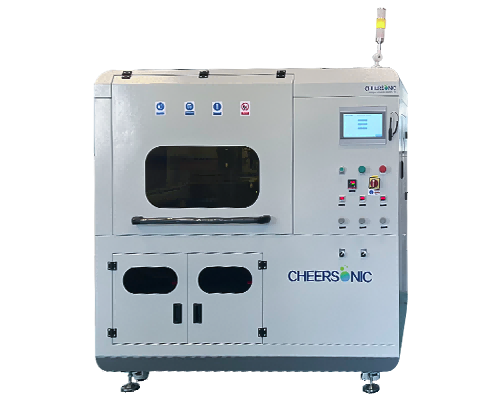Research on Membrane Electrodes for Water Electrolysis
In the complex system of the water electrolysis device, the electrolytic water membrane electrode is the most critical “heart” part. It cleverly integrates the dual functions of the electrode and the diaphragm, just like the core hub of a precision instrument, and plays a decisive role in whether the electrolytic water reaction can be carried out efficiently. Next, let’s take a deeper look at its secrets.
1. Basic composition and function
Composition
The electrolytic water membrane electrode is mainly built up by three core blocks: the catalyst layer, the gas diffusion layer, and the diaphragm. Sometimes it is also equipped with auxiliary structures such as a support or a current collector. Each part is like a closely cooperating team member, driving the operation of the electrochemical process of water electrolysis.
Working principle
In the water electrolysis reaction, the two sides of the membrane electrode have a clear division of labor, one side acts as the anode, and the other side acts as the cathode. The anode area is responsible for the oxygen evolution reaction (OER), and the cathode area focuses on the hydrogen evolution reaction (HER). The diaphragm plays a key role at this time. On the one hand, it accurately separates the oxygen produced by the anode and the hydrogen generated by the cathode to avoid the mixing of the two and cause safety risks; on the other hand, the diaphragm bears the heavy responsibility of conducting specific ions, providing the necessary conditions for the continuous advancement of the electrolysis reaction. The catalyst layer is like an “acceleration engine” for the reaction, which can significantly reduce the overpotential of the reaction and greatly accelerate the reaction rate. The gas diffusion layer is like an efficient “transport channel”, which helps the gas products to diffuse and discharge in time, and promotes the rapid delivery of reactants (such as water molecules, ions, etc.) to the catalyst layer.
2. Detailed introduction of each component
Catalyst layer
Function and importance
The catalyst layer can be called the “performance core” of the membrane electrode, which directly affects the rate and efficiency of the water electrolysis reaction. Its core mission is to reduce the overpotential of the hydrogen evolution reaction (HER) and the oxygen evolution reaction (OER), so that these reactions can operate efficiently at a lower voltage, thereby greatly reducing power consumption. For example, in the absence of high-quality catalysts, the actual voltage required for water decomposition will far exceed the theoretical value, resulting in a significant reduction in energy efficiency; and the appropriate catalyst can significantly reverse this situation, greatly improving the economy and practicality of hydrogen production by electrolysis of water.
Common materials
In the cathode hydrogen evolution reaction, the precious metal platinum (Pt) and its alloys have become “experts” in generating hydrogen with their ultra-high catalytic activity. However, the high cost of platinum has seriously restricted large-scale promotion. To this end, researchers have actively explored non-precious metal catalysts, such as transition metal sulfides (such as molybdenum disulfide MoS₂) and transition metal phosphides (such as nickel phosphide Ni₂P). Modification of them by nanostructuring and composite methods is expected to make these materials a low-cost and effective alternative.
The anode oxygen evolution reaction often uses precious metals or complexes such as iridium (Ir) and its oxides (such as IrO₂), ruthenium (Ru) and its oxides as catalysts. They have good catalytic effects on the reaction of water oxidation to generate oxygen, which can effectively reduce the overpotential of the oxygen evolution reaction. However, the cost issue is still prominent. Therefore, non-precious metal oxides such as manganese dioxide MnO₂, cobalt oxide Co₃O₄, and perovskite-type composite oxides have been studied and developed in depth, striving to achieve effective cost control while ensuring catalytic performance.
Gas diffusion layer
Function and importance
The gas diffusion layer has two major tasks. First, it helps the gas products (hydrogen and oxygen) to diffuse quickly from the catalyst layer to the gas phase space of the electrolyzer and discharge smoothly, preventing the gas from accumulating on the electrode surface and hindering subsequent reactions. Second, it needs to assist the reactants in the electrolyte (such as water molecules, ions, etc.) to be efficiently transferred to the catalyst layer to ensure that the electrode reaction is “sufficiently supplied” and maintain the stable and continuous electrolysis of water. In the actual electrolysis process, if the gas cannot be evacuated in time, it will cover the surface of the catalyst, reducing the contact opportunity between the reactants and the catalyst, resulting in a sudden drop in the reaction rate.
Common materials and characteristics
The gas diffusion layer is mostly made of porous carbon materials, such as carbon fiber paper, carbon cloth, etc. These carbon materials have good conductivity, which can ensure the efficient conduction of electrons inside the electrode; they have high porosity, which creates abundant channels for gas and liquid transmission; they also have suitable hydrophobicity, which can effectively prevent excessive infiltration of electrolyte and ensure smooth and unimpeded gas diffusion.
Diaphragm
Function and Importance
The diaphragm plays the dual role of “isolation guard” and “ion conductor” in the electrolytic water membrane electrode. It strictly separates the hydrogen and oxygen produced by the anode and cathode to prevent the mixing of the two to cause safety accidents (such as explosions). At the same time, the diaphragm is responsible for conducting specific ions, maintaining the ion balance of the electrolyte, and ensuring the steady progress of the electrolysis reaction. Different types of electrolytic water systems are suitable for different diaphragm materials, and the performance of the diaphragm has a profound impact on the efficiency and safety of electrolytic water.
Common types and characteristics
Proton exchange membranes are often used in proton exchange membrane electrolysis of water. They have a unique polymer structure with functional groups that can conduct protons (H⁺) on the molecular chain, such as the sulfonic acid group of perfluorosulfonic acid membrane – SO₃H. It is highly selective for protons, allowing only protons to pass through, accurately controlling the ion conduction path, and ensuring that the electrolysis reaction is efficient and orderly. The membrane can effectively separate hydrogen and oxygen and produce high-purity hydrogen, but its preparation process is complex, costly, and has extremely strict requirements on the quality of the influent water.
Anion exchange membranes are used in anion exchange membrane electrolysis of water. Their molecular structure contains fixed cationic groups (such as quaternary ammonium salt groups, etc.) and movable anions (usually hydroxide ions OH⁻ are conducted in the membrane). It uses electrostatic interactions to achieve selective permeation of hydroxide ions to ensure smooth electrolysis of water in an alkaline environment. This membrane can be used with relatively cheap non-precious metal catalysts, and the requirements for influent water quality are relatively loose, but the ion conductivity of some products currently still needs to be improved.
Asbestos diaphragms are often used in alkaline electrolysis of water. They are made from porous natural fibrous silicate minerals, are relatively inexpensive, have a certain ion conduction capacity in alkaline electrolysis systems, and can better separate hydrogen and oxygen. However, asbestos is a known carcinogen, which poses health and environmental risks, and has certain limitations in terms of ion conduction efficiency and durability.
III. Preparation method of membrane electrode
Coating method
The coating method is to evenly coat the prepared catalyst ink (generally a fluid mixture formed by dispersing catalyst powder in a suitable solvent and binder) on the surface of the gas diffusion layer or diaphragm by spraying, brushing or screen printing. Then, after drying, hot pressing and other process steps, the catalyst layer is closely combined with the gas diffusion layer or diaphragm, and finally formed into a membrane electrode. This method is simple to operate and low in cost. It is suitable for laboratory research and small-scale preparation, but there are certain challenges in controlling the uniformity and stability of the membrane electrode.
Hot pressing method
The hot pressing method requires the catalyst layer, gas diffusion layer and diaphragm and other layers of materials to be neatly stacked in a specific order, and then pressed under high temperature and high pressure environment to make the layers fit tightly to form an integrated membrane electrode. The hot pressing method can enhance the bonding strength between the layers, which helps to improve the overall performance and stability of the membrane electrode. However, this method has high requirements for equipment, and process parameters (such as temperature, pressure, time, etc.) need to be precisely controlled, otherwise it is easy to have an adverse effect on the quality of the membrane electrode.
4. Factors affecting membrane electrode performance
Catalyst activity and loading
The activity of the catalyst is like the “throttle” of the reaction rate, which directly determines the speed of hydrogen and oxygen evolution reactions. The higher the activity, the faster the reaction progresses under the same conditions, the lower the required overpotential, and the higher the efficiency of water electrolysis. At the same time, the loading amount of the catalyst on the electrode also needs to be reasonably weighed. If the loading amount is too low, the active sites are insufficient and it is difficult to effectively promote the reaction; if the loading amount is too high, it will increase the cost and may also cause the catalyst to agglomerate, affecting its dispersion and activity.
Pore structure and hydrophobicity of gas diffusion layer
The porosity, pore size distribution and hydrophobicity of the gas diffusion layer jointly affect the transmission efficiency of gas and liquid. The appropriate pore structure can ensure rapid diffusion of gas and smooth transmission of liquid. Good hydrophobicity can prevent the electrolyte from excessively wetting the gas diffusion layer and maintain the smoothness of gas diffusion. Once the pore structure is unreasonable or the hydrophobicity is poor, it will have a negative impact on the electrolysis of water.
Ionic conductivity and stability of the diaphragm
The ionic conductivity of the diaphragm determines the migration speed of ions between the cathode and anode, which in turn affects the rate and efficiency of the electrolysis of water. In addition, the diaphragm must have excellent chemical stability in the chemical environment of water electrolysis (acidic, alkaline, etc.), and can be used for a long time without degradation, breakage, etc. Otherwise, it will seriously affect the service life of the membrane electrode, as well as the safety and stability of water electrolysis.
V. Application and development trend
Application field
Electrolysis membrane electrodes are widely used in various water electrolysis hydrogen production technologies, including proton exchange membrane water electrolysis, anion exchange membrane water electrolysis, alkaline water electrolysis, etc. It plays a key role in the energy field (such as supplying hydrogen for fuel cell vehicles, realizing renewable energy storage, etc.) and the chemical field (such as hydrogen production in synthetic ammonia, hydrogenation refining and other processes), and has effectively promoted the transformation of clean energy and sustainable industrial development.
Development trend
In the research and development of high-performance materials, researchers continue to explore new catalyst materials, hoping that they have higher catalytic activity and lower cost. At the same time, they develop diaphragm materials with better ion conductivity and stronger chemical stability, and continuously improve the performance of gas diffusion layer materials to fundamentally enhance the overall strength of membrane electrodes.
Preparation process optimization is also a key direction, studying more accurate, efficient and scalable membrane electrode preparation processes, improving the stability and consistency of membrane electrode quality, and reducing preparation costs to meet the growing needs of the electrolysis of water to produce hydrogen industry.
With the rapid development of renewable energy, membrane electrodes also need to better adapt to the coupling application of renewable energy power generation systems such as solar energy and wind energy, enhance the adaptability to intermittent power sources, and achieve more efficient green hydrogen production.
In the preparation of membrane electrodes, ultrasonic spraying technology shows unique advantages. It can accurately control the coating thickness to ensure that the performance of each part of the membrane electrode is uniform and consistent. Compared with traditional spraying methods, ultrasonic spraying can achieve thinner and more uniform coating effects, which is of great significance for improving the catalytic activity of the catalyst layer and the ion conductivity of the diaphragm. For example, when coating catalyst ink, the high-frequency vibration of ultrasound makes the ink atomization finer, and can more accurately and evenly distribute the catalyst on the surface of the gas diffusion layer or diaphragm, optimize the microstructure, and thus greatly improve the overall performance of the membrane electrode.
At the same time, ultrasonic spraying technology can significantly improve material utilization. In the traditional spraying process, a large amount of material will be wasted due to splashing and other reasons, while ultrasonic spraying uses high-frequency vibration to fully atomize the coating, effectively reducing material loss and reducing production costs. It is especially suitable for large-scale membrane electrode production and can significantly improve production efficiency.
In addition, this technology can also strengthen the bonding force between the layers of the membrane electrode. In the membrane electrode, it is very important to closely bond the layers. Ultrasonic spraying can better integrate the materials of each layer, such as making the catalyst layer and the gas diffusion layer or diaphragm fit more closely, enhancing the overall structural stability, and further improving the performance of the membrane electrode in a complex electrolysis environment.
In summary, as the core component of water electrolysis hydrogen production technology, the performance optimization and cost control of the water electrolysis membrane electrode are of great significance to improving the efficiency of water electrolysis hydrogen production, expanding the application field and promoting energy transformation. The ultrasonic spraying technology has injected new vitality into the innovation of membrane electrode preparation process and is expected to help the industry reach new heights.
About Cheersonic
Cheersonic is the leading developer and manufacturer of ultrasonic coating systems for applying precise, thin film coatings to protect, strengthen or smooth surfaces on parts and components for the microelectronics/electronics, alternative energy, medical and industrial markets, including specialized glass applications in construction and automotive.
Our coating solutions are environmentally-friendly, efficient and highly reliable, and enable dramatic reductions in overspray, savings in raw material, water and energy usage and provide improved process repeatability, transfer efficiency, high uniformity and reduced emissions.
Chinese Website: Cheersonic Provides Professional Coating Solutions




